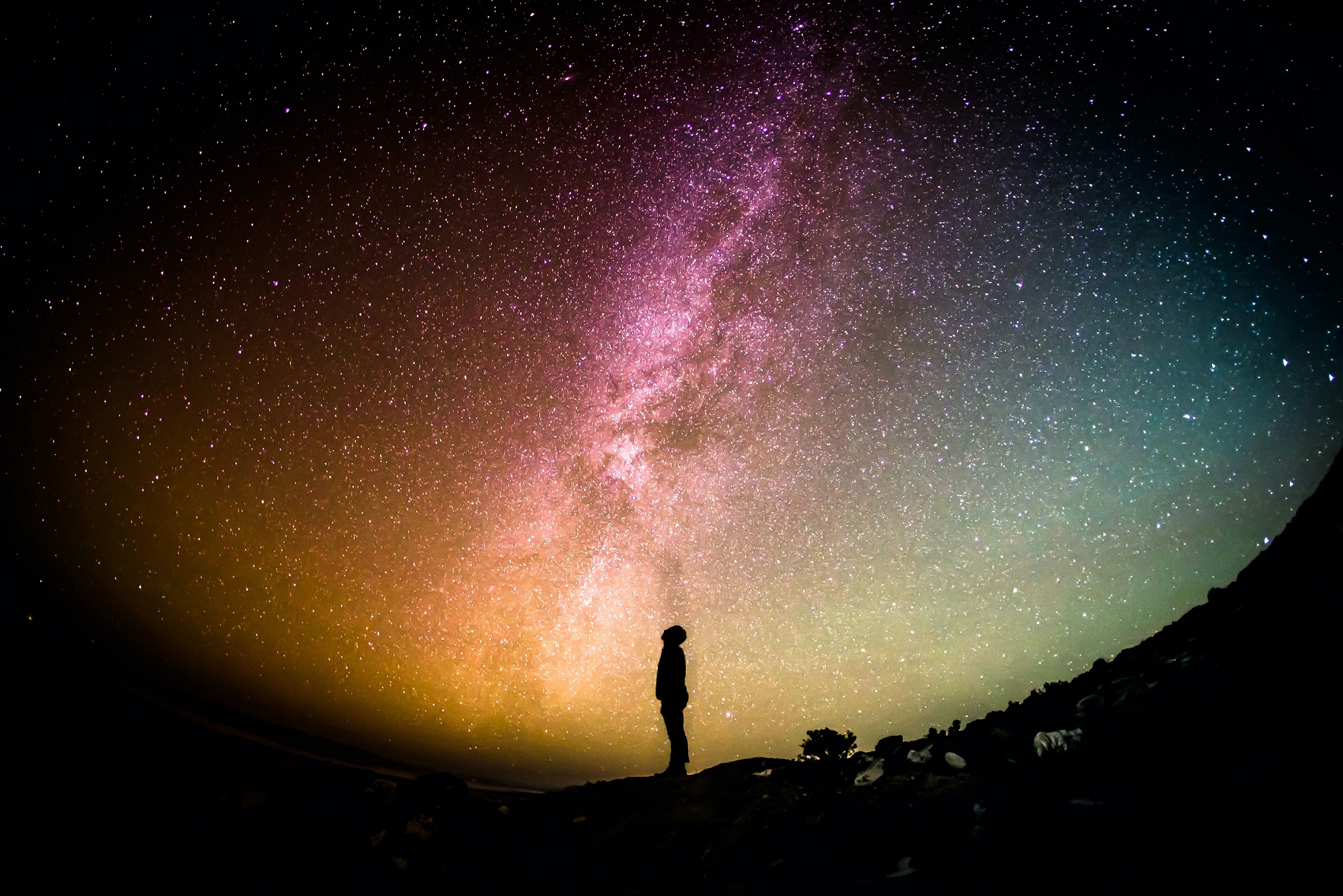Beyond what our natural or prosthetic senses can observe and understand, there exist physical realities we don’t even know we don’t know.
Human knowledge has, over thousands of years, grown exponentially. We’ve probed beyond the solar system, sequenced genomes, plumbed the ocean depths and developed machines that are beginning to think for themselves. We did it all with the tools that nature gave us, paired with those that we invented to assist us by sensing what we can’t. This overwhelming collection of pure, raw knowledge fills libraries and has made us unbelievably powerful, punching far above our weight as really clever primate generalists with opposable thumbs who found meat and fire. Why, then, haven’t we fixed everything? Perhaps it’s because we don’t know what we don’t know, and we have trouble believing that we don’t perceive the whole of reality through our fallible wetware.
Despite the definitional impossibility of knowing what we don’t know, the borders of the vast unknown can be occasionally inferred by observing the edges of what we do. Here are a few of those edges that hint at what might lurk just beyond our ken.
We don’t see what we think we see. The constant, messy stream of data that our eyes send to our brain requires a good operating system to organize it all. Luckily, our brains have evolved to be pretty good at the task, but it comes at the cost of seeing the world not as it is, but as it recently was. A recent experiment found that our brains stabilize the janky flow of sensory input by averaging the data and helping us ignore inconvenient changes in objects that seem to be unchanging despite continuous adjustments in light, movement, and perspective. Or, as Popular Mechanics put it, we see everything as it was 15 seconds ago. We don’t know what it looks like now because our brains are protecting us from the confusion of constantly having to think about everything around us.

We don’t know everything there is to see. Bees, for example, see colors we don’t. Flowers that appear merely pretty to us hold a world of visual stimulation for pollinating insects that can perceive UV light. Earlier this year, researchers from Clemson College of Science studied Argentina anserina (Silverweed) flowers to find out what role the UV-reflecting pigments in the petals play in pollination. They found that many flowers have UV-absorbing pigments near the center and UV-reflectors near the tips of petals, creating a target pattern to attract pollinators to the payload (and payoff). At higher elevations, plants even change up the pigment ratio to create larger-appearing centers. Do we see any of this with our own eyes, though? Nope. Without specific tools, we wouldn’t even realize what we’re missing.
We don’t know everything there is to smell. Some people, however, have super-noses, like Joy Milne. Joy fell in love with her future husband, Les, because of his wonderful, manly smell. After spending ten years and having three kids together, though, his smell changed, and only Joy could tell. It became a “nasty yeast smell,” she said. Over the following years, though, his behavior changed, too. He became moody, less tolerant, more disagreeable. Eventually, Les was diagnosed with Parkinson’s disease. When they met with a Parkinson’s support group, that’s when Joy realized what the musty smell was, because people there smelled the same way. Turns out, Joy can smell Parkinson’s disease, long before it’s diagnosed. How many other undiscovered smells are out there, and what could they tell us, if only we could sense them?
We don’t know the full diversity of life in our biosphere. Ohio State University researchers sampling ocean water found a stunning array of new RNA viruses, including a potentially new phylum named Taraviricota after the Tara Oceans Consortium, a group that helped collect the samples. RNA viruses were abundant in waters all over the world, implying that they fill an important ecological niche, but prior to this research, the extent and variety, even the existence of most of these viruses was unknown. What role(s) do they play, and what else is out there that we cannot even imagine?
Scientists have finally mapped the last 8% of an individual human’s genome, putting together the last odd bits of “dark matter DNA,” those long strings of repeating sequences that have turned out to be surprisingly important. Once disregarded as “junk DNA,” nonsensical stutters of genetic material that had no purpose, scientists are finding that variations in this material have real consequences. There’s much that we don’t know when it comes to any genome’s inner workings, a fact worth considering the more that we tinker with it.
Then, there’s the W boson. This tiny, basic particle, fundamental to the existence of, well, everything, may be heavier than scientific observations say it should be. W and Z bosons are responsible for the main force that holds matter together at a subatomic level, and without them, no atoms larger than hydrogen would ever form. A big difference in its nature would throw scientific understanding of the universe into a bit of disarray.
All of which is to say that for as large as the sum total of human understanding of life, the universe and everything is, beyond the edge of that knowledge lies a vast gulf of which we know not. We can peer into the darkness, and perhaps the greatest accomplishment of humanity is how much we’ve been able to ascertain from the murky depths of know-not, bringing illumination like Prometheus.
And yet, the banality of modern life continues unabated even under the blessing of knowledge. For the last three years, the scientific rush to discover everything that could be known about COVID-19 and its variants has produced multiple effective vaccines, treatments and protocols, but there’s still everyone’s uncle on Facebook who worries about getting microchipped via a mandated shot, and political reality means that we don’t know if the person next to us is contagious. We know that although genetic differences exist, race is a social construct; yet somehow the crude concept of race combines with history to result in tragic outcomes that should have no place in this world.
Varying standards of evidence are a blunt tool that the public generally (and the profession of law in particular) uses to reach the sweet spot between factual reality and the constraints of crowded and imperfect systems. To this, we must add the physical limits of human wetware and the ignorance of that which always lurks just beyond the edge of what is measurable, describable, and thus currently knowable. We don’t know every facet of reality, although factors that affect it do so just fine without our understanding them. We only think we’re unbiased observers and computational thinkers. The proper response in the face of the abyss is, at least, a touch of humility.
Related: The Evidence of our Eyes and Ears


Join the conversation!